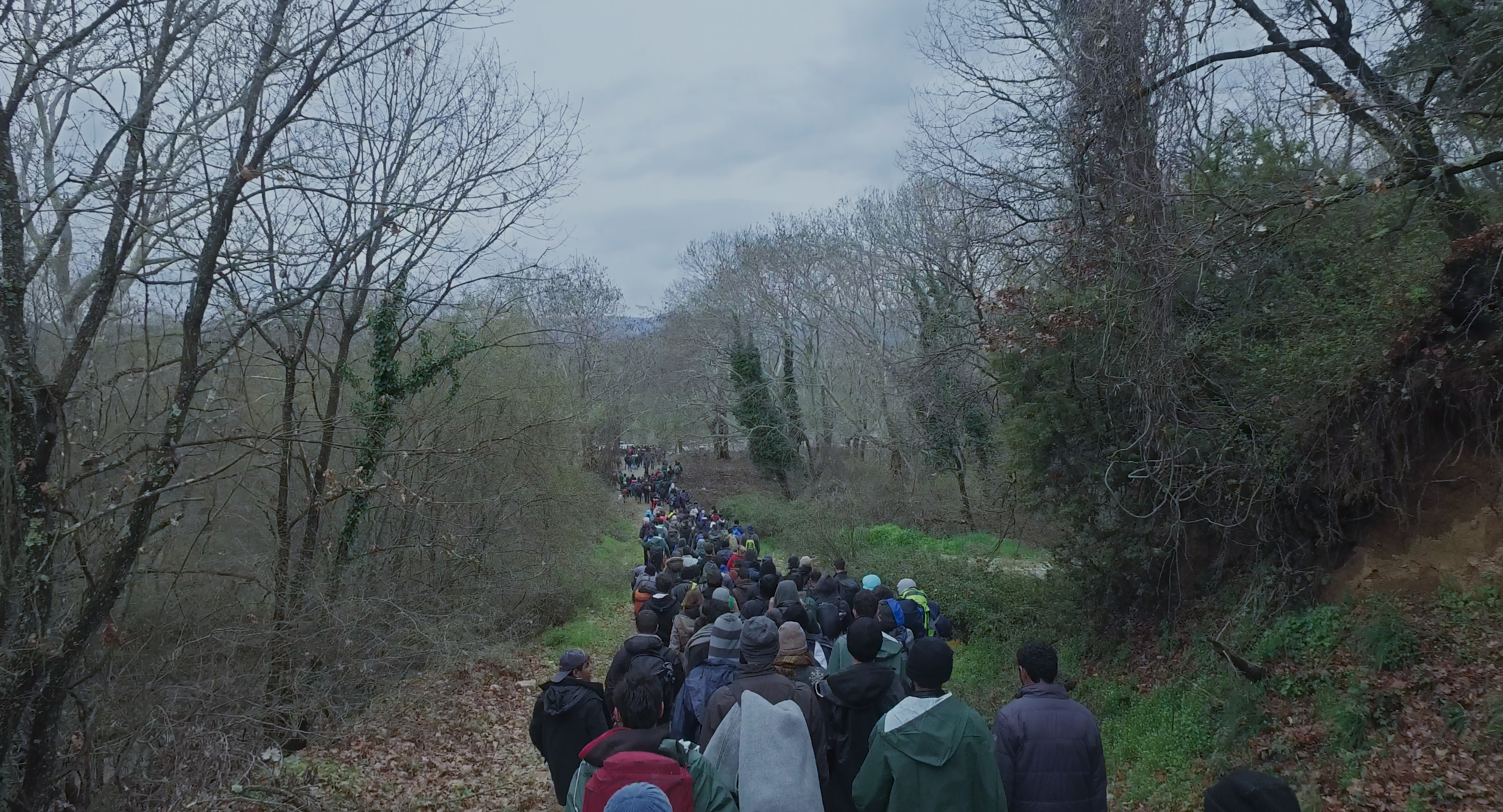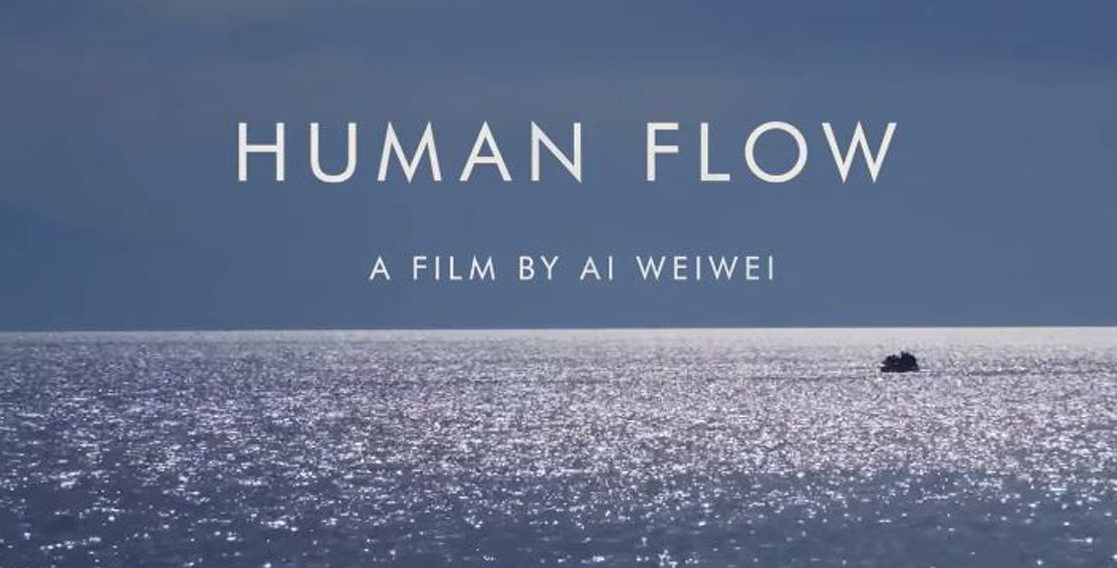In his latest documentary Human Flow, internationally renowned Chinese artist Ai Weiwei compiles footage from over 23 countries to underscore the scale of the global refugee crisis. Often, the artist—drone camera in tow—tackles his charged subject matter from a distance. Rather than attaching the film to a select few individuals, Weiwei instead opts for sweeping panoramas of unstable migration currents.

As the film skips from country to country, the scaled-out narrative blurs experiences for empathy-generating effect. African migrants reach Italian shores without any acknowledgement of their countries of origin. Their newly arrived bodies produce visual spectacle. These plainly labelled Africans huddle together, wrapped in glinting gold thermal blankets. The only possible response to these deracinated images of hardship is the immediate gut reaction to nonspecific distress.
An elderly Rohingya woman in a Bangladeshi refugee camp glares silently at a camera that refuses to cut away. She is not probed any further. Small moments such as these—unwelcome intrusions into the everyday—are fleeting reminders of the director’s interest in refugee flow over refugee. Weiwei forsakes focus on the individual in service of showcasing a tremendous collective suffering.

One potential benefit of Human Flow‘s narrative expanse is commonalities drawn between worldwide migrations. Viewers are jetted from place to place to follow a story across continents, and no nation is left unchallenged. The film makes the urgent suggestion that we are all responsible for the wellbeing of the planet’s peoples.
An Afghan woman at the Greek-Macedonian border states, “No one leaves their country lightly.” Though often minimizing the individual experience of migration, Human Flow ultimately conveys the weight of these journeys and the moral imperative of addressing the refugee crisis today.



